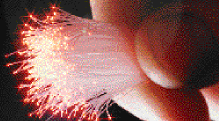Fiber Advance Eases Splicing
Charles T. TroyCORNING, N.Y. -- In a move that should improve splicing efficiency and lower system installation costs, Corning Incorporated has tweaked its production process for single-mode fiber and tightened its core/clad concentricity specs by 25 percent.

Corning will tighten fiber optic specifications to meet customer demand. |
Corning, which uses the outside vapor deposition process, said that it had to "reinvent several of its manufacturing processes" to produce the tighter specs.
Corning told Photonics Spectra that the manufacturing changes took place in the "lay-down" phase where a vapor of silica and germanium "soot" is deposited on the outside of the preform. The key was techniques for controlling concentricity in the lay-down phase.
LATEST NEWS
- Exail Signs LLNL Contract, Partners with Eelume Apr 26, 2024
- Menlo Moves U.S. HQ: Week in Brief: 4/26/2024 Apr 26, 2024
- Optofluidics Platform Keys Label-, Amplification-Free Rapid Diagnostic Tool Apr 25, 2024
- DUV Lasers Made with Nonlinear Crystals Enhance Lithography Performance Apr 25, 2024
- Teledyne e2v, Airy3D Collaborate on 3D Vision Solutions Apr 24, 2024
- One-Step Hologram Generation Speeds 3D Display Creation Apr 24, 2024
- Innovation Award Winners for Laser Technology Honored in Aachen Apr 23, 2024
- Intech 2024: AI Arrives on the Shop Floor Apr 22, 2024
